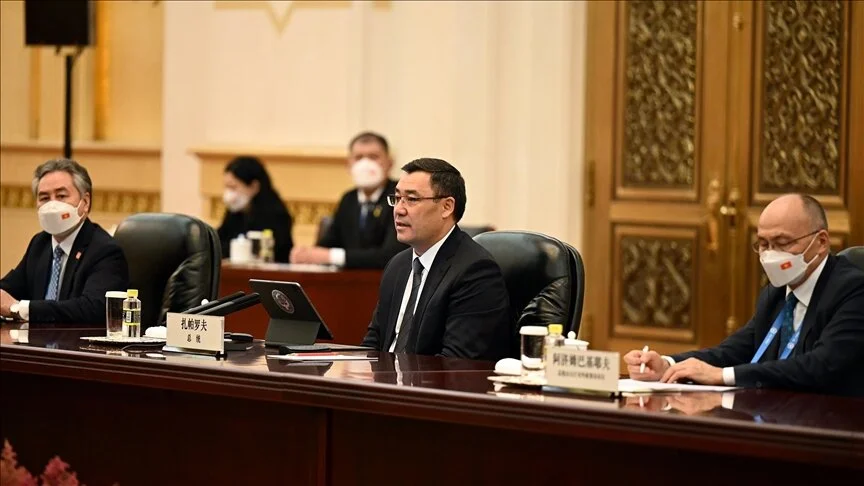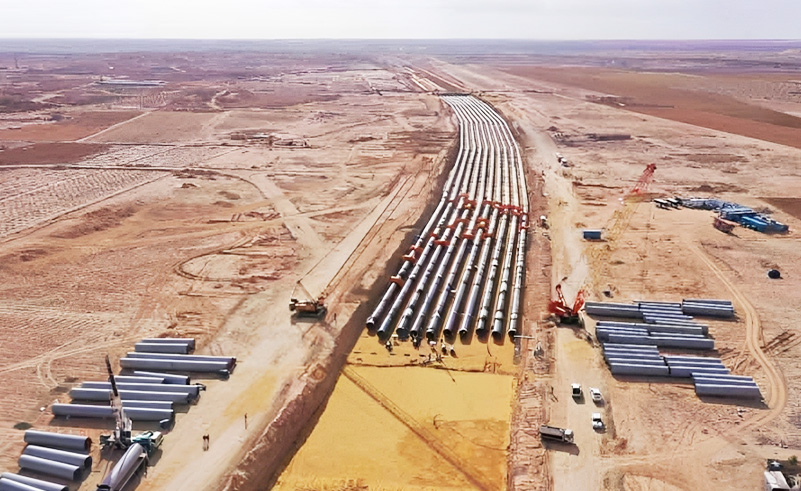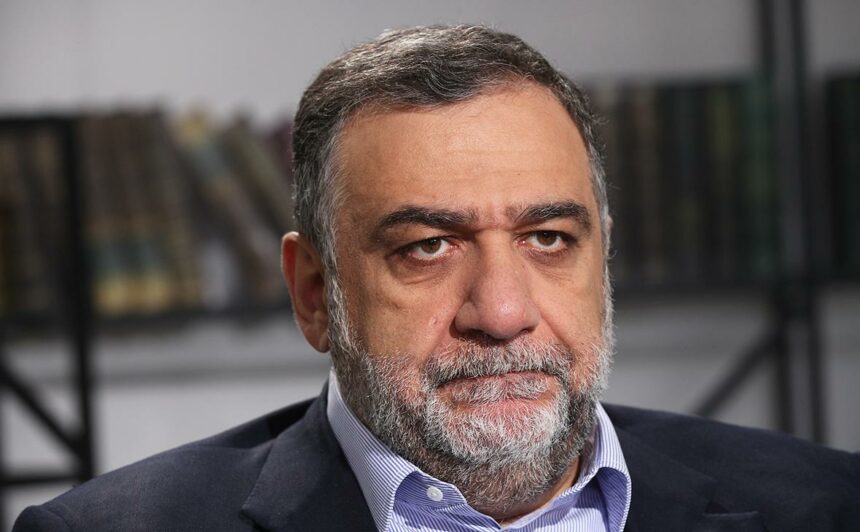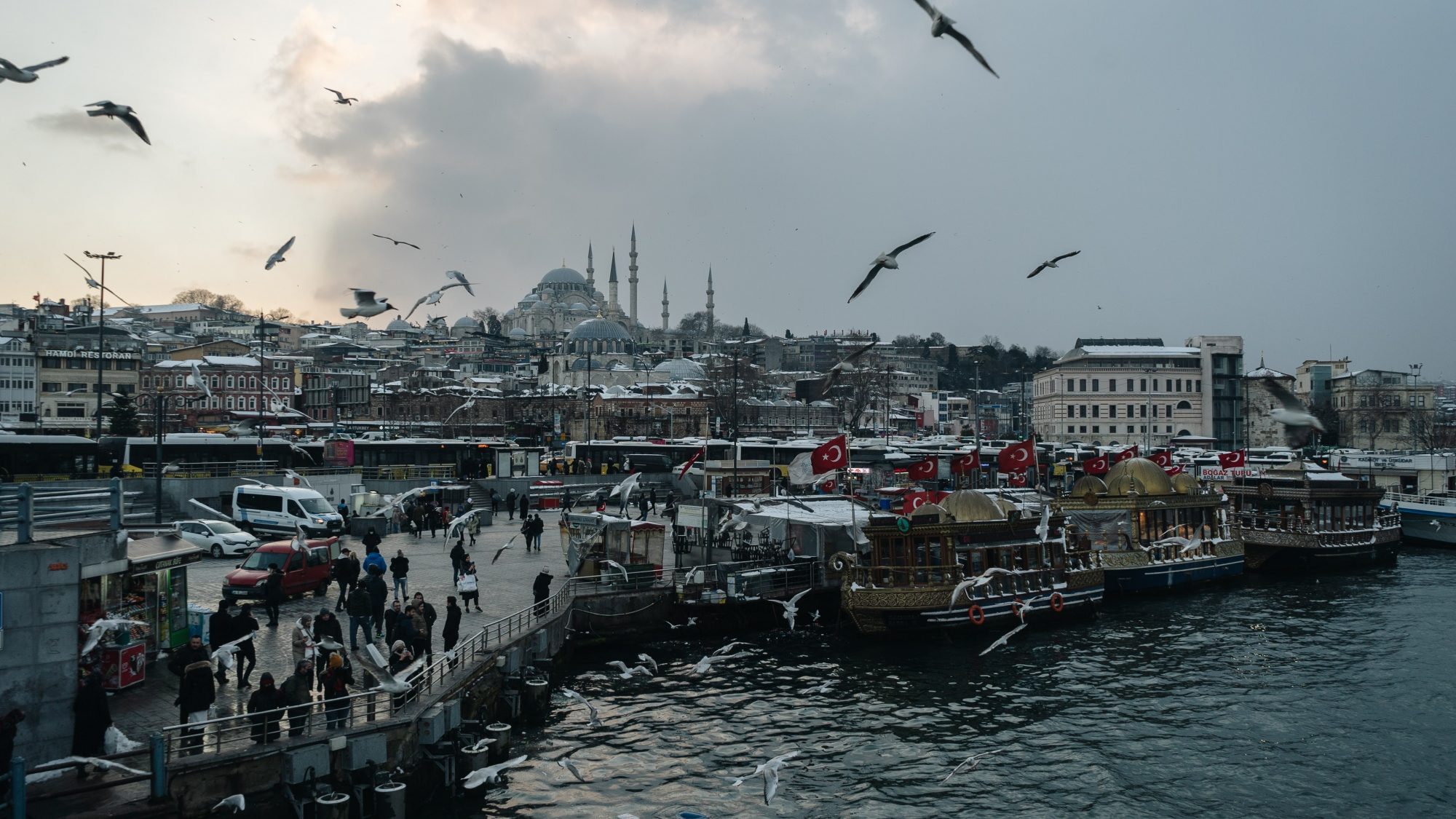
Deniz ÜNVER
Independent Researcher
On May 14, 2023, Iranian President Ebrahim Raisi and his Russian Counterpart Vladimir Putin agreed on the construction of a railway line between Iran’s northern cities of Rasht and Astara in order to facilitate trade[1]. This railway line is significant as it is the only missing link in the International North-South Transit Corridor (INSTC), in which Iranian Transport Minister Mehrdad Bazrpash and his Russian Counterpart Vitaly Savelyev made an agreement worth of 1.6 billion dollars[2].
The INSTC, a 7,200 km long sea and rail line, aims to connect Mumbai to St. Petersburg. The INSTC passes from northern Russia across the Caspian Sea to Southern Iran through the Strait of Hormuz and into the Arabian Sea[3]. Thus, there exist three main routes in the INSTC. The first one is the Western Route, which passes through Russia’s Dagestan Republic, and the second route passes through the Caspian Sea, Volga, Turkmen and Iranian Ports[4]. Finally, the last route passes through Kazakhstan and Turkmenistan by rail and road[5].
Russia and Iran view the INSTC as a game-changer for global trade flows. The reason for this is the fact that this transit corridor is considered an alternative to the Suez Canal, which is among the busiest routes and accounts for 12 per cent of global trade[6]. In other words, constructing this transit corridor can diversify the current trade routes. According to Russian President Putin, ¨The unique North-South transport artery, of which the Rasht-Astara Railway will become a part, will help to diversify global traffic flows significantly. Transportation along the new Corridor will have a strategic competitive advantage[7]¨. In addition, Moscow and Tehran hope constructing the INSTC will improve their positions in global trade. Moreover, the INSTC shortens the cargo road between St. Petersburg to Mumbai from 45 days to 15-24 days[8]. Accordingly, Putin stated that "there is a significant saving in terms of time and costs[9]". Thus, it is noteworthy that the construction of the INSTC highlights the cooperation between Russia and Iran and other countries in which the INSTC passes.
The construction of this transit corridor is beneficial for both Russia and Iran. For Russia, the INSTC is beneficial as it connects Russia with Indian Ports and the Persian Gulf[10]. Also, Russia plans to bypass Western sanctions through the INSTC as it changes and diversifies the current global trade flows. Thus, Moscow expects that this transit corridor will increase its current 17 million tons of cargo to 32 million[11]. Therefore, Moscow has the intention to increase its cargo turnover by 155 per cent by 2030 through the INSTC, as stated by Russian Deputy Prime Minister Marat Khusnullin in a round table meeting on the sidelines of the 14th International Economic Forum 2023[12].
For Iran, the realization of the INSTC means the opening of ten Russian cities with 1 million consumers[13]. Within the realization of this Corridor, Iran will reach Russian markets. More specifically, Tehran expects that it can handle 20-25 million tons of cargo annually through this transit corridor[14]. Therefore, Iran is expected to gain approximately 20 billion dollars if the INSTC will be fully operational[15]. Moreover, Iran wishes this Corridor to be fully operational as it will decrease the country’s dependence on its oil revenues[16].
The INSTC is not a new project. It has a relatively long history. As a matter of fact, Russia and Iran have been discussing the construction of the INSTC for more than 20 years[17]. However, the railway construction did not progress for years due to a lack of financing as well as logistical and political complications[18]. It is argued that the current war in Ukraine and the Western Sanctions imposed on Russia have pushed Moscow to construct the INSTC. Even it was claimed by some Iranian analysts that Russia was not eager to build this Corridor before the war in Ukraine[19]. Yet, Russia had no choice but to build the INSTC as its shipping operations in the Black Sea were threatened due to the war in Ukraine[20].
Nevertheless, there exist challenges to the realization of the INSTC. First of all, political tensions exist in the geography which the rail links are planned to pass according to the INSTC. For instance, the Iran-Azerbaijan conflict can create delay in the realization of this Corridor as part of the INSTC passes from Azerbaijan. It is commented that Iran indirectly supports Armenia against Azerbaijan on the territorial disputes, and it will challenge the realization of the INSTC. Nevertheless, Azerbaijan has some gains from this project such as increasing its trade revenues and reducing cargo costs. In addition to the political tensions, Iran lacks proper rail lines and a well functioning network to contribute to the INSTC.
In conclusion it can be stated that the Western sanctions have forced Russia to look for alternatives to bypass those sanctions and protect its trade revenues. For this reason, Russia has insisted on the construction of the Rasht-Astara rail line in Iran in order to realize the INSTC. For Iran, this project means integrating more with Russian markets and increasing its trade. INSTC is beneficial for Tehran as it is also exposed to Western sanctions. However, there exist challenges upon the realization of this project. The current political tensions, which is the Azerbaijan-Iran conflict, and lack of proper rail lines may challenge the realization of this transit corridor. Despite the challenges, the INSTC has a potential to increase trade ties between Russia, Iran and India as well as contributing to the Eurasian connectivity by diversifying trade routes.
[1] Burç Eruygur and Syed Zafer Mehdi, ¨Iran, Russia Sign Railway Deal for North-South Corridor¨, Anadolu Agency, May 17, 2023, https://www.aa.com.tr/en/asia-pacific/iran-russia-sign-railway-deal-for-north-south-corridor/2899651
[2] Ibid.
[3] Nikola Mikovic, ¨Russia and Iran Press Ahead With New Suez¨, Asia Times, May 26, 2023, https://asiatimes.com/2023/05/russia-and-iran-press-ahead-with-new-suez/
[4] Sibel Morrow and Beyza Kılıç, ¨Russia Aims 155% Increase In Cargo Turnover Along North-South Corridor by 2030¨, Anadolu Agency, May 18, 2023, http://https://www.aa.com.tr/en/world/russia-aims-155-increase-in-cargo-turnover-along-north-south-corridor-by-2030/2900669
[5] Ibid.
[6] Nikola Mikovic, ¨Russia and Iran Press Ahead With New Suez¨, Asia Times.
[7] Burç Eruygur and Syed Zafer Mehdi, ¨Iran, Russia Sign Railway Deal for North-South Corridor¨, Anadolu Agency.
[8] Nikola Mikovic, ¨Russia and Iran Press Ahead With New Suez¨, Asia Times.
[9] Burç Eruygur and Syed Zafer Mehdi, ¨Iran, Russia Sign Railway Deal for North-South Corridor¨, Anadolu Agency.
[10] Emil Avdaliani, ¨The Expansion of the INSTC¨, Silk Road Briefing, April 4, 2023, https://www.silkroadbriefing.com/news/2023/04/04/the-expansion-of-the-international-north-south-transport-corridor-geopolitical-updates/
[11] Ibid.
[12] Sibel Morrow and Beyza Kılıç, ¨Russia Aims 155% Increase In Cargo Turnover Along North-South Corridor by 2030¨, Anadolu Agency.
[13] Emil Avdaliani, ¨The Expansion of the INSTC¨, Silk Road Briefing.
[14] Ibid.
[15] ¨Iran’s Approach to the North and South Transport Corridors: Obstacles & Future Prospects¨, Silk Road Briefing, June 19, 2023, https://www.silkroadbriefing.com/news/2023/06/19/irans-approach-to-the-north-and-south-transport-corridors-obstacles-future-prospects/
[16] Ibid.
[17] Nikola Mikovic, ¨Russia and Iran Press Ahead With New Suez¨, Asia Times.
[18] Ibid.
[19] Ibid.
[20] Ibid.
© 2009-2025 Avrasya İncelemeleri Merkezi (AVİM) Tüm Hakları Saklıdır
Henüz Yorum Yapılmamış.
-
 HUMAN RIGHTS VIOLATIONS OF THE REFUGEES: THE CASE OF FRONTEX AND THE EU - 14.09.2021
HUMAN RIGHTS VIOLATIONS OF THE REFUGEES: THE CASE OF FRONTEX AND THE EU - 14.09.2021
Deniz ÜNVER 14.09.2021 -
 AVRUPA'DA ENERJİ KRİZİ VE TÜRKMEN GAZI: SORUN MU, ÇÖZÜM MÜ? - 09.01.2023
AVRUPA'DA ENERJİ KRİZİ VE TÜRKMEN GAZI: SORUN MU, ÇÖZÜM MÜ? - 09.01.2023
Deniz ÜNVER 09.01.2023 -
 C5+C SUMMIT: WHAT DOES IT TELL ABOUT CHINA AND ITS RELATIONS WITH CENTRAL ASIA? - 31.05.2023
C5+C SUMMIT: WHAT DOES IT TELL ABOUT CHINA AND ITS RELATIONS WITH CENTRAL ASIA? - 31.05.2023
Deniz ÜNVER 31.05.2023 -
 THE NILE WATER RESOURCES AND THE NEW DELTA PROJECT - 07.11.2023
THE NILE WATER RESOURCES AND THE NEW DELTA PROJECT - 07.11.2023
Deniz ÜNVER 07.11.2023 -
 THE SITUATION IN KARABAKH AND RUSSIA’S POSITION ON THE KARABAKH CONFLICT - 15.03.2023
THE SITUATION IN KARABAKH AND RUSSIA’S POSITION ON THE KARABAKH CONFLICT - 15.03.2023
Deniz ÜNVER 15.03.2023
-
 KIBRIS’IN KADERİNİN DEĞİŞTİĞİ GÜN - KIBRIS POSTASI - 20.12.2021
KIBRIS’IN KADERİNİN DEĞİŞTİĞİ GÜN - KIBRIS POSTASI - 20.12.2021
Ata ATUN 20.12.2021 -
 THE SUMMIT OF EXPECTATIONS - 06.03.2023
THE SUMMIT OF EXPECTATIONS - 06.03.2023
Jakub KOREJBA 06.03.2023 -
 STUDENT GROUP AT CAL STATE NORTHRIDGE BOASTS OF ‘SHUTTING DOWN’ SPEECH BY AWARD-WINNING SCHOLAR - WASHINGTON POST - 15.11.2016
STUDENT GROUP AT CAL STATE NORTHRIDGE BOASTS OF ‘SHUTTING DOWN’ SPEECH BY AWARD-WINNING SCHOLAR - WASHINGTON POST - 15.11.2016
Eugene VOLOKH 16.11.2016 -
 SIXTY YEARS AFTER ANKARA, LET’S VENTURE A RESET IN EU-TURKEY RELATIONS - GPPI - 13.09.2023
SIXTY YEARS AFTER ANKARA, LET’S VENTURE A RESET IN EU-TURKEY RELATIONS - GPPI - 13.09.2023
Nils LANGE 14.09.2023 -
 THE ORGANIZATION OF TURKIC STATES – A LONG EXPECTED ALTERNATIVE FOR CENTRAL ASIA - 29.03.2024
THE ORGANIZATION OF TURKIC STATES – A LONG EXPECTED ALTERNATIVE FOR CENTRAL ASIA - 29.03.2024
Jakub KOREJBA 29.03.2024


